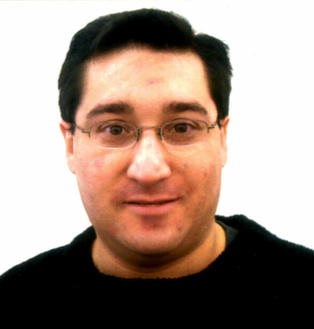 When the Space Shuttle Atlantis lifts off from Cape Canaveral, Fla., on Friday, for the final mission in the 30-year space shuttle program, it will be carrying GE Healthcare's Vivid q cardiovascular ultrasound system. Atlantis will deliver the laptop-sized ultrasound machine to the International Space Station to study the effects of microgravity during long space flights as part of NASA's human research program—perhaps a prelude for a future mission to Mars.
When the Space Shuttle Atlantis lifts off from Cape Canaveral, Fla., on Friday, for the final mission in the 30-year space shuttle program, it will be carrying GE Healthcare's Vivid q cardiovascular ultrasound system. Atlantis will deliver the laptop-sized ultrasound machine to the International Space Station to study the effects of microgravity during long space flights as part of NASA's human research program—perhaps a prelude for a future mission to Mars.
Vivid q will replace a 10-year-old ultrasound aboard the space station that stopped functioning earlier this year, according to GE. But it also represents a significant upgrade, in that the old ultrasound did not offer panoramic scanning.
The technology will monitor general health of ISS astronauts and cosmonauts and support various NASA and European Space Agency health experiments. GE says that NASA also is considering Vivid q for the space agency's underwater simulator, the New Millennium Observatory Network (NeMO Net), a mile under the ocean, 300 miles off the coast of Oregon.
This is not the first time NASA or its military and foreign partners in space exploration have pioneered mobile health technology. In fact, aerospace programs have been leaders. Back in 1997, NASA noted that its history of telemedicine reached back to the Mercury space program of the early 1960s. That spirit of exploration and innovation has continued into the new century.
In March, MobiHealthNews reported that 3M was teaming with the Japanese Aerospace Exploration Agency (JAXA) to install the 3M Littmann Scope-to-Scope Tele-Auscultation System on the ISS, allowing earthbound physicians to listen to the heartbeats of space travelers. (If Dr. Eric Topol gets his way, the Vivid q or similar ultrasound will render the Littmann stethoscope obsolete before too long.)
A couple of years ago, I wrote about a program that the U.S. Air Force described as "ICU care in the air." Critical care air transport teams (CCATTs) fly advanced medevac missions from battlefield airbases such as Kandahar Airfield in Afghanistan, with full intensive care available onboard. This includes an in-flight electronic medical record—directly populated by medical devices—that connects wirelessly with existing Military Health System EMRs on the ground.
A notable figure in military telemedicine has been Dr. S. Ward Casscells, assistant secretary of defense for health affairs under President George W. Bush. (He did a three-month tour in Iraq while working for the Pentagon.) As MobiHealthNews reported last year, Casscells, a senior scholar at the Texas Heart Institute, has participated in several relief missions to Haiti since the January 2010 earthquake there and convinced the U.S. military to leave telemedicine equipment in that devastated nation so Haiti could have better access to specialty care in the future.
Casscells, whom I interviewed in his Washington office back in February, also has been a leader of the Disaster Relief and Emergency Medical Services (DREAMS), a U.S. Army-funded program at the University of Texas Health Science Center at Houston, Texas A&M University, Texas Heart Institute and Memorial Hermann Hospital to develop advanced telemedicine technology for disaster relief and emergency medicine. The "Super Ambulance" concept that I reported on in January, the brainchild of Casscells and legendary trauma surgeon Dr. James H. "Red" Duke Jr., is but one outgrowth of DREAMS.
What we're seeing now in space and on the battlefield could soon be saving civilian lives. Based on 50 years of history, you can bet on it.

















